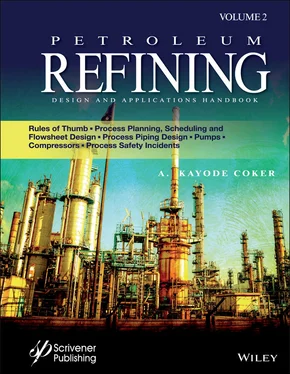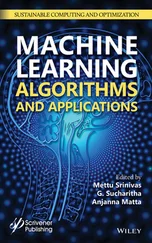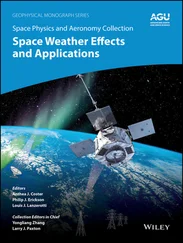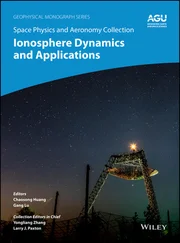1 Cover
2 Title Page
3 Copyright
4 In Loving Memory of
5 Preface
6 Acknowledgments
7 13 Rules of Thumb—Summary13.0 Introduction
8 14 Process Planning, Scheduling, and Flowsheet Design14.1 Introduction 14.2 Organizational Structure 14.3 Role of the Process Design Engineer 14.4 Computer-Aided Flowsheeting 14.5 Flowsheets—Types 14.6 Flowsheet Presentation 14.7 General Arrangements Guide 14.8 Computer-Aided Flowsheet Design/Drafting 14.9 Flowsheet Symbols 14.10 Line Symbols and Designations 14.11 Materials of Construction for Lines 14.12 Test Pressure for Lines 14.13 Working Schedules 14.14 Information Checklists 14.15 Basic Engineering and Front End Engineering Design (FEED) References
9 15 Fluid Flow15.1 Introduction 15.2 Flow of Fluids in Pipes 15.3 Scope 15.4 Basis 15.5 Incompressible Flow 15.6 Compressible Flow: Vapors and Gases [4] 15.7 Important Pressure Level References 15.8 Factors of “Safety” for Design Basis 15.9 Pipe, Fittings, and Valves 15.10 Pipe 15.11 Total Line Pressure Drop 15.12 Reynolds Number, Re (Sometimes Used N Re) 15.13 Pipe Relative Roughness 15.14 Darcy Friction Factor, f 15.15 Friction Head Loss (Resistance) in Pipe, Fittings, and Connections 15.16 Oil System Piping 15.17 Pressure Drop in Fittings, Valves, and Connections 15.18 Resistance of Valves 15.19 Flow Coefficients for Valves, C v 15.20 Flow Meters Conclusion 15.21 Estimation of Pressure Loss Across Control Valves 15.22 The Direct Design of a Control Valve 15.23 Water Hammer 15.24 Friction Pressure Drop for Compressible Fluid Flow 15.25 Darcy Rational Relation for Compressible Vapors and Gases 15.26 Velocity of Compressible Fluids in Pipe 15.27 Procedure 15.28 Friction Drop for Compressible Natural Gas in Long Pipe Lines 15.29 Panhandle-A Gas Flow Formula 15.30 Modified Panhandle Flow Formula 15.31 American Gas Association (AGA) Dry Gas Method 15.32 Complex Pipe Systems Handling Natural (or Similar) Gas 15.33 Two-Phase Liquid and Gas Flow in Process Piping 15.34 UniSim Design PIPESYS 15.35 Pipe Line Safety 15.36 Mitigating Pipeline Hazards 15.37 Examples of Safety Design Concerns 15.38 Safety Incidents Related With Pipeworks and Materials of Construction 15.39 Lessons Learned From Piping Designs 15.40 Design of Safer Piping Nomenclature Greek Symbols Subscripts References
10 16 Pumps16.1 Pumping of Liquids 16.2 Pump Design Standardization 16.3 Basic Parts of a Centrifugal Pump 16.4 Centrifugal Pump Selection 16.5 Hydraulic Characteristics for Centrifugal Pumps 16.6 Suction Head or Suction Lift, h s 16.7 Discharge Head, h d 16.8 Velocity Head 16.9 Friction 16.10 Net Positive Suction Head (NPSH) and Pump Suction 16.11 General Suction System 16.12 Reductions in NPSH R 16.13 Charting NPSH RValues of Pumps 16.14 Net Positive Suction Head (NPSH) 16.15 NPSH Requirement for Liquids Saturation With Dissolved Gases 16.16 Specific Speed 16.17 Rotative Speed 16.18 Pumping Systems and Performance 16.19 Power Requirements for Pumping Through Process Lines 16.20 Affinity Laws 16.21 Centrifugal Pump Efficiency 16.22 Effects of Viscosity 16.23 Temperature Rise and Minimum Flow 16.24 Centrifugal Pump Specifications 16.25 Number of Pumping Units 16.26 Rotary Pumps 16.27 Reciprocating Pumps 16.28 Pump Selection 16.29 Selection Rules-of-Thumb 16.30 Case Studies 16.31 Pump Cavitations 16.32 Pump Fundamentals 16.33 Operating Philosophy 16.34 Piping 16.35 Troubleshooting Checklist for Centrifugal Pumps Nomenclature Subscripts Greek Symbols References
11 17 Compression Equipment17.1 Introduction 17.2 General Application Guide 17.3 Specification Guides 17.4 General Considerations for Any Type of Compressor Flow Conditions 17.5 Reciprocating Compression 17.6 Suction and Discharge Valves 17.7 Specification Sheet 17.8 Performance Considerations 17.9 Compressor Performance Characteristics 17.10 Hydrogen Use in the Refinery Nomenclature Greek Symbols Subscripts References
12 Glossary of Petroleum and Technical Terminology
13 Appendix D
14 Appendix E
15 Index
16 About the Author
17 Also of Interest
18 End User License Agreement
1 Chapter 14 Table 14.1 Typical thickness chart—insulation for services 70°F through 1200°F p... Table 14.2 Three programs offer a different mix of features. Table 14.3 Uses of intelligent P&IDs by operations. Table 14.4 A system of equipment designations. Table 14.5 Typical identification for flowsheet process functions. Table 14.6 Instrumentation nomenclature--complete general identification.
2 Chapter 15Table 15.1 Changes in pressure head between upstream and downstream points (sour...Table 15.2 Comparison of dimensions and flow area for tubing and iron pipe size ...Table 15.3 Reynolds number.Table 15.4 Equivalent roughness of various surfaces.Table 15.5 Explicit equations for calculating the friction factor for rough pipe...Table 15.6 Viscosities of petroleum products.Table 15.7 Hazen–Williams C factor.Table 15.8a Suggested fluid velocities in pipe and tubing: liquids, gases, and v...Table 15.8b Typical design* velocities for process system applications.Table 15.9 Equivalent length-to-diameter ratios for fittings.Table 15.10 “K” factor table: representative resistance coefficients (K) for val...Table 15.11 Comparison between the loss coefficient (velocity heads), K ffor pip...Table 15.11a 2-K constants for loss coefficients for valves and fittings.Table 15.11b 3-K constants for loss coefficients for valves and fittings.*Table 15.12 Excess head loss K correlation for changes in pipe size.Table 15.13 Recommended fluid velocity and maximum ΔP for carbon steel vapor lin...Table 15.14 Approximate k values for some common gases (68°F, 14.7psia).Table 15.15 Conditions at the pipe exit as a function of the Mach number.Table 15.16 Limiting critical values.Table 15.17 Simplified flow formula for compressible fluid pressure drop, rate o...Table 15.18 Suggested steam pipe velocities in pipe connecting to steam turbines...Table 15.19a Flow of air through Sch. 40 pipe (used for estimating for detailed ...Table 15.19b Discharge of air through an orifice* in cubic feet of free air per ...Table 15.20 Factor “F” for Babcock steam formula*.Table 15.21 Input data and computer results for maximum compressible fluid in a ...Table 15.22 Dry-gas flow transmission factors.Table 15.23 Pressure-base multipliers for quantity.Table 15.24 Temperature-base multipliers for quantity.Table 15.25 Specific gravity multipliers for quantity.Table 15.26 Flowing-temperature multipliers for quantity.Table 15.27 Characteristics linear velocities of two-phase flow regimes.Table 15.28 Two-phase flow moduli as a function of Martinelli Moduli X.Table 15.29 Martinelli symbols used for two-phase modulus.Table 15.30 Two-phase flow example.Table 15.31 Computer results of two-phase flow pressure drop calculations of Exa...Table 15.32 Computer results of two-phase pressure drop calculation of Example 1...Table 15.33 A glossary of two-phase flow.Table 15.34 Gas–liquid two-phase downflow.Table 15.35 Criteria for sizing connecting lines in vacuum service.Table 15.36 Computer results of line sizes for flashing steam condensate of Exam...Table 15.37 Cameron hydraulic data.*Table 15.38 Results of the simulation of the case study.Table 15.39 In calculating the design pressure for steel piping, the longitudina...
3 Chapter 16Table 16.1 General types or classification of pumps.Table 16.2 Approximate capacity-head ranges for centrifugal pumps.Table 16.3 Effects of fluid density on head.Table 16.4 Basic parts of a centrifugal pump.Table 16.5 Requirements for mechanical seal installations.Table 16.6 Pump selection guide.Table 16.7 Type selection based on liquid handled.Table 16.8 Revised performance calculations of centrifugal pump for handling oil...Table 16.9 Pump materials of construction.Table 16.10 Troubleshooting centrifugal pumps.Table 16.11 Pump installation check list [31].
Читать дальше












